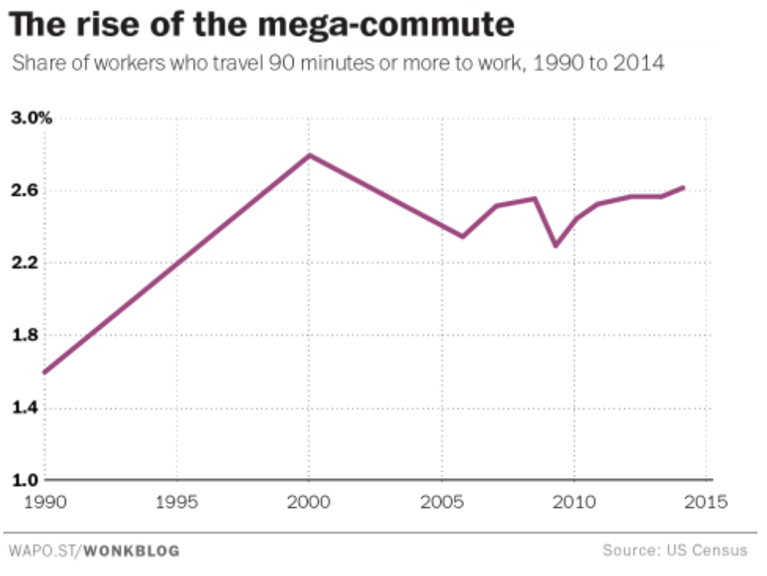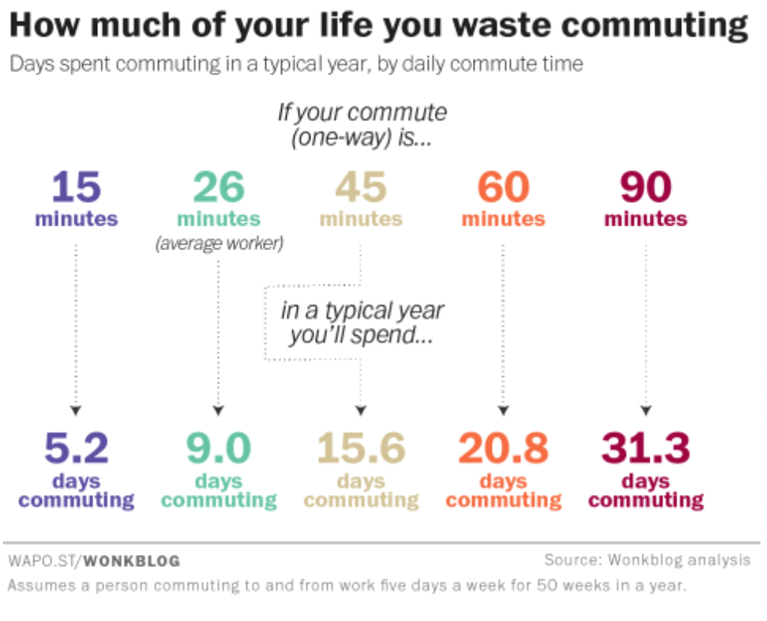Transportation and the Health of Populations.
 Last week, we saw two examples of how political policies affect the health of populations. The Congressional Budget Office determined that the healthcare bill currently under consideration by the Senate will strip 22 million people of coverage; the Supreme Court ruled to partially uphold the Trump administration’s ban on travelers from six Muslim-majority countries. Each of these policies, crafted at the highest level of government, has profound implications for well-being, and argues for our continued engagement with politics. For today’s note—in keeping with this theme—a look at how decisions around transportation policy shape health.
Last week, we saw two examples of how political policies affect the health of populations. The Congressional Budget Office determined that the healthcare bill currently under consideration by the Senate will strip 22 million people of coverage; the Supreme Court ruled to partially uphold the Trump administration’s ban on travelers from six Muslim-majority countries. Each of these policies, crafted at the highest level of government, has profound implications for well-being, and argues for our continued engagement with politics. For today’s note—in keeping with this theme—a look at how decisions around transportation policy shape health.
Our health is, in large part, a product of our choices. What we choose to prioritize, based on our values and the knowledge available to us, either pays health dividends as a product of smart investment in the social, economic, and environmental conditions of health, or, at times, undermines well-being—or fails to move the needle on health at all—when our investment ignores these conditions. I will write more on the role of choice in public health in a future Dean’s Note. For today, I will use transportation as a case-in-point. Transportation embeds societal decisions, creating health consequences that are a direct result of the choices we make when dealing with a sector that we do not typically consider a “health sector.”
Transportation is a ubiquitous presence in our lives. We are constantly in a state of getting-to-places, whether our destination is work, school, errands, attending to family commitments, or leisure travel. Take just one subset of this trend—commuting to work. There were more than 139 million US commuters in 2014. And their time spent in-transit is only increasing. The average US worker takes 26 minutes to travel to their place of employment, nearly 20 percent longer than the average 1980 commute of 21.7 minutes (Figure 1).

Ingraham C. The astonishing human potential wasted on commutes. The Washington Post. February 25, 2016. https://www.washingtonpost.com/news/wonk/wp/2016/02/25/how-much-of-your-life-youre-wasting-on-your-commute/?utm_term=.ec4549c86b5e Accessed May 30, 2017.
In 1990, the Census began tracking the number of Americans who commuted 90 minutes or more each day, 1.6 percent of workers that year. In 2014, the number of these “mega-commuters” had risen to 2.62 percent (Figure 2).

Ingraham C. The astonishing human potential wasted on commutes. The Washington Post. February 25, 2016. https://www.washingtonpost.com/news/wonk/wp/2016/02/25/how-much-of-your-life-youre-wasting-on-your-commute/?utm_term=.ec4549c86b5e Accessed May 30, 2017.
All of this commuting time adds up. In 2014, commuters spent a total of 1.8 trillion minutes “on the go.” A daily 26-minute commute amounts to a full nine days per year in-transit. A daily 90-minute commute amounts to an entire month—31.3 days (Figure 3).

Ingraham C. The astonishing human potential wasted on commutes. The Washington Post. February 25, 2016. https://www.washingtonpost.com/news/wonk/wp/2016/02/25/how-much-of-your-life-youre-wasting-on-your-commute/?utm_term=.ec4549c86b5e Accessed May 30, 2017.
Most of this commute time is spent in a car, rather than on a bus, train, bicycle, or on foot. In 2009, more than three-fourths of US workers drove alone to work (Figure 4).

McKenzie B, Rapino M. Commuting in the United States: 2009 American Community Survey Reports. US Census Bureau; Washington DC: 2011. https://www2.census.gov/library/publications/2011/acs/acs-15.pdf Accessed May 30, 2017.
Given how much time we spend traveling, it is not surprising that transportation shapes our health. It does so in three key ways—through its effect on the mind and body of travelers themselves, through its effect on people who live near the pollution of major transportation routes, and through its potential to broaden or limit access to opportunities and resources, especially for disadvantaged populations.
First, there is transportation’s direct effect on the health of travelers. Longer commutes have been associated with decreased physical activity, increased risk of obesity, cardiovascular risk, and sleep disturbances. There is also the issue of road safety. I have written previously about public health’s success in this area. In 1997, the US saw a 90 percent decrease in annual road deaths since 1925. This decline, which the CDC touted as among the top public health achievements of the 20th century, was not due to any dramatic change in American drivers; rather, it is the result of a number of public health reforms geared towards changing the conditions around driving, to lower the risk of hazard. These measures include regulatory standards for roads and vehicles and the introduction of seat belt laws. Safety campaigns, designed to spread awareness of traffic laws, have also done much to reorient culture towards greater conscientiousness on the road. These steps have been complemented by the work of the National Highway Traffic Safety Administration. William Haddon, the first director of what became the NHTSA, pioneered an epidemiological approach to road safety, contributing to the preventive, public health framework that has done so much to improve driving conditions in the US.
Second, transportation infrastructure shapes health through its potential to increase the risk of pollution exposure for certain groups. Minorities and populations at the bottom of the socioeconomic ladder are at a disproportionate risk of exposure to traffic-generated air pollution, which can lead to health problems like asthma. In 2010, 3.1 percent of US whites were found to live within 150 meters of a major highway, compared to 4.4 percent of blacks, 5 percent of Hispanics, and 5.4 percent of Asian/Pacific Islanders. The relationship between race and transportation is particularly long and complex. Throughout our country’s history, government-funded highways have divided or isolated minority neighborhoods, curtailing opportunity for residents of these communities, and facilitating the de facto housing segregation we see to this day.
Third, transportation can play a central role in determining socioeconomic mobility, influencing access to everything from education to quality food. When these resources are not immediately available in a neighborhood, being able to get to them using affordable, reliable transportation can be a significant asset to low-resource populations. Likewise, lack of transportation can further entrench the disadvantages of low socioeconomic status.
If we choose, we can leverage each of these factors into healthier populations. Improvements in road safety, for example, are the product of a conscious choice our country made to invest in creating a healthier context for drivers. We can apply the same intentionality to improving other aspects of our transportation system, as we transition from simply guarding against hazard to using transportation to proactively promote health. We can do so, first, by improving the quality of our day-to-day travel, doing what we can to make the American commute less sedentary and more conducive to health. Building sidewalks, crosswalks, and bicycle lanes can help us foster a healthier commute. The extra steps required to utilize systems of public transit can also make for a healthier transportation experience, if we invest in trains and buses that are safe, clean, and accessible to all. Second, we can mitigate our transportation system’s tendency to deepen socioeconomic inequities and racial health gaps. Public health can play an important role here by demonstrating how housing that is located near major roadways undermines health, and by shining a light on how this risk is disproportionately borne by minorities and the economically disadvantaged, with the goal of creating a more equitable transportation infrastructure in the years to come. In the short-term, we must work to narrow the health gaps that are exacerbated by unfair housing practices and residential segregation. This work has been a longtime focus of SPH, and a special interest of our Activist Lab. Third, we can communicate that transportation is more than just a utilitarian means of getting from point A to point B. It is rather a lifeline to education, food, and the opportunities that shape health. With this in mind, it becomes easy to see how broadening access to safe, reliable transportation is consistent with our goal of promoting the health of populations. We can also see how the features of our transportation systems that harm health depend on our willingness to allow them to persist. Moving the needle on health requires moving populations—by train, bus, car, or, whenever possible, by foot—to where they can best access the resources that facilitate well-being, for the health of all.
I hope everyone has a terrific week. Until next week.
Warm regards,
Sandro
Sandro Galea, MD, DrPH
Dean and Robert A. Knox Professor
Boston University School of Public Health
Twitter: @sandrogalea
Acknowledgement: I am grateful to Eric DelGizzo for his contributions to this Dean’s Note.
Previous Dean’s Notes are archived at: https://www.bu.edu/sph/tag/deans-note/